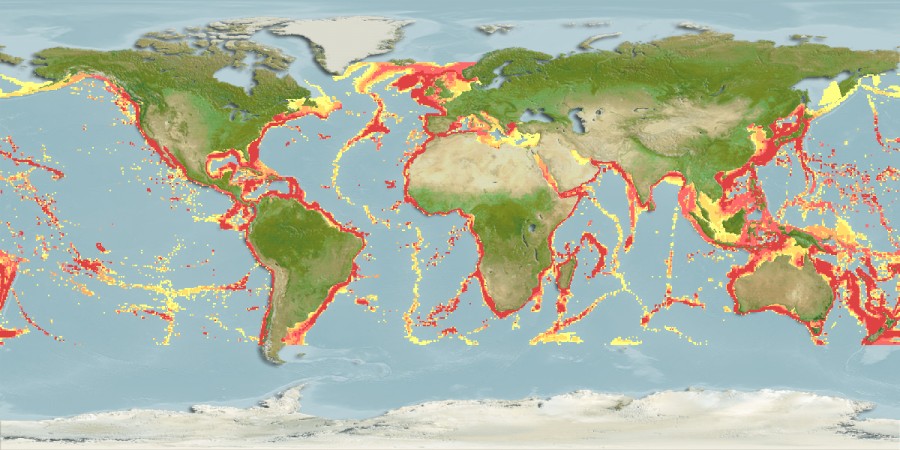The Bluntnose Sixgill Shark is a widely, but patchily, distributed large shark species that is found in the Pacific, Atlantic (including the Mediterranean Sea) and Indian Oceans where it is found at depths of 0 to 2000 m (
Cook and Compagno 2005). It is found in deep, cool waters along the continental slopes, and in British Columbia is found in the Strait of Georgia and in deeper inlets of the adjoining mainland and the west coast of Vancouver Island (
Dunbrack and Zielinski 2003).
This is a large (to 4.8m), heavy-bodied shark that is easily distinguished from other shark species by the presence of six gills (instead of the typical five gills of other shark species) and because it has only one dorsal fin (instead of the two dorsal fins typical of other species) (COSEWIC 2007). The sixgill shark is a predatory species that will feed on a variety of animals, from skates and rays to squid, crabs and sea cucumbers. No aggressive behaviour towards human has been reported.
Sixgill sharks have vertical diurnal migration, remaining at depths during the day and moving to the surface at night, and are reportedly light sensitive. However, researchers in BC have observed individuals of this species (ranging from 1.35–3.54 m in length) in high light conditions in the afternoon in shallow water (20 - 40 m), from June through to October (Dunbrack and Zielinski 2003).
COSEWIC (2007) lists this species as special concern in Canada, with commercial fisheries listed as a threat.
Read the COSEWIC status report.
Read the National Management Plan for this species.
Read a Vancouver Sun article on this species in BC.
View a video.
Report shark sightings to 1 877 50-SHARK (1-877-507-4275).
